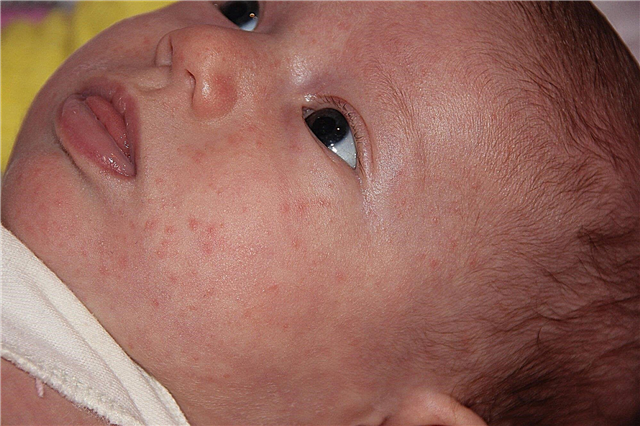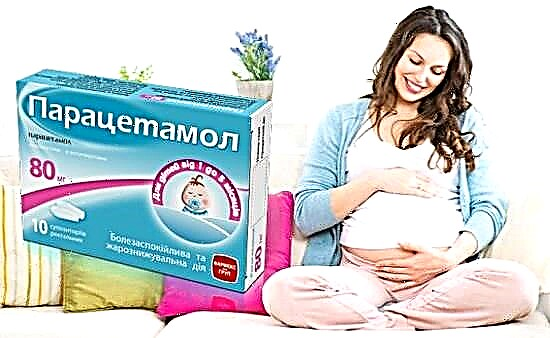During the initial examination with a doctor, it is always required to show the tongue - by its appearance, you can determine the onset of a particular disease. A normal tongue is pinkish, moist and velvety in appearance. If something is wrong in the body, it can become covered with rashes.

Normal tongue - clean and pinkish
Probable causes
Due to the weak and undeveloped immunity in children, almost all pathogenic microbes and bacteria begin to multiply intensively. One of the consequences of their effect is a rash on the tongue of a child. These rashes are of different types:
- serous fluid in the vesicles;
- dense blisters of irregular shape, can cause itching;
- pustular type of different location depth with cloudy contents;
- spots of varying degrees and types of color (usually scarlet or red, may be white);
- ulcers affecting the mucous membrane;
- plaques, sometimes merging in several pieces;
- keratinized areas.
The most common causes of the appearance of various rashes in the oral cavity in children are as follows.
Stomatitis
The rash, caused by harmful germs carried by dirty hands into the mouth, appears at the base of the tongue, small pimples, painted in a bright red or pink color, accompanied by bad breath. It causes soreness and burning sensation when eating.
Rubella
The rash starts from the face and neck, then covers the entire body, including the oral mucosa (single pimples). They are round or elongated in shape, do not merge with each other, painted in a pale red color.
Scarlet fever
This is a very dangerous infectious disease caused by streptococcus, fraught with severe complications in the heart, kidneys, as well as rheumatism and pneumonia. The name of the disease (translated as "scarlet") emphasizes the bright color of the rash that covers the body and mucous membranes of the throat and tongue.
Additional Information. The scarlet color of scarlet fever is due to the vessels bursting from the effects of the toxin.
The intensity of sprinkling increases gradually, up to a maximum of 3-5 days. After that, the blanching of the rash begins, peeling and peeling of the skin at the sites of the lesions.
Pseudotuberculosis
It is possible to sprinkle with small dots on the raspberry tongue of a child with Far Eastern scarlet fever (or pseudotuberculosis), rashes appear from 2 to 4 days of illness. Initially, the tongue is covered with a thick white coating. The disease is accompanied by severe intoxication, gives complications to the joints and liver.
Stevens Jones Syndrome
An infectious disease is potentially life-threatening. Thin-walled blisters with serous fluid sprinkle the lips, cheeks and tongue. After opening, erosive very painful wound surfaces are formed. The tongue swells greatly, the lips become covered with necrotic crusts. In severe cases, blisters in the mouth prevent people from eating and talking.
Chickenpox
An airborne infectious disease is characterized by the formation of papules in the mouth, throat and under the tongue. Pimples are red in color. Each small chickenpox bubble has a liquid inside, after its bursting, weeping wounds form, which give the baby pain when eating, they can also pinch and itch.

Tongue with chickenpox
A rash with chickenpox is called vesicles and is found not only on the tongue, but also on the gums and lips from the inside.
Other pathologies
A rash on the tongue of a child appears due to diseases such as:
- Viral pemphigus caused by enterovirus, children can become infected with it by airborne droplets;
note! Rashes can appear on the delicate skin of the baby's butt and hands.
- Candidiasis (or thrush) is a fungal infection of the genus Candida, the baby can pick it up from the mother, especially with weakened immunity, the treatment consists mainly in treating the baby's mouth with soda solution;
- Allergy - manifestations in the form of itchy and not very rashes upon contact with an allergen;
- Measles - a rash in the form of small white specks, similar to grains of semolina, appears on the mucous membrane of the cheeks, soft and hard palate, and tongue. The famous pediatrician Komarovsky believes that measles is dangerous for young children with complications such as pneumonia, eye diseases, up to blindness, encephalitis, and poor blood clotting.
Associated symptoms
A rash that appears on a child's tongue is always accompanied by certain general or characteristic symptoms for a particular disease.
For example, rubella starts with a slight rise in temperature, nasal congestion, and coughing. Before the appearance of rashes, many parents confuse this (and other diseases) with a banal rhinitis.
Scarlet fever also looks like a common cold at first (plus weakness in the body). However, as the disease progresses, weakness increases, the skin turns pale, and the cough is often accompanied by convulsions.
Measles rash accompanies a stuffy nose, fever, sore throat and joints. With inflammation that accompanies stomatitis, the gums and palate turn red, lymph nodes enlarge, an unpleasant taste appears in the mouth, and salivation increases.
Pseudotuberculosis is accompanied by pain in the joints, severe intoxication, most of all affecting the small intestine and liver.
Diagnosis of the disease
In addition to the attending pediatrician, a gastroenterologist, dentist, ENT doctor, infectious disease specialist can clarify the diagnosis when a rash appears in a child's tongue.
To clarify the diagnosis, they use the following methods:
- visual examination of the mucous membrane of the tongue of a small patient;

At the appointment, the pediatrician always looks at the child's tongue
- collection of anamnesis;
- analytical research: this is a detailed biochemical blood test, tests for determining the allergen, urine analysis, coprogram;
- examination of a smear from the mucous membrane of the mouth and tongue.
What to do if a child has a rash in the mouth
To determine the exact diagnosis and prescribe adequate treatment for children under one year old, with the appearance of a rash and associated symptoms, you should contact your pediatrician.
Doctors prescribe the following medicines as local antiseptics and antimicrobials:
- Rotokan solution as lotions;

Rotokan solution is used to get rid of a rash on the tongue
- antimicrobial "Miramistin" (0.01% solution) for wiping the tongue and rinsing the mouth;
- Chlorophyllipt (herbal preparation);
- Chlorhexidine bigluconate to fight bacteria, fungus, chlamydia;
- 0.05% Chlorhexidine solution.
Important! It should not be used in children under 36 months of age.
- Furacilin tablets for rinsing.
To alleviate the condition with rashes on the tongue, especially with itching, you can resort to traditional medicine recipes: these are decoctions from oak bark, tinctures of calendula, chamomile or sage. As a rule, they are all hypoallergenic and quite effective.
Council. It is recommended to rinse the oral cavity several times a day with antiseptic solutions.
Preventive methods
To minimize the consequences of diseases accompanied by a rash on the tongue, it is recommended to carry out preventive measures:
- strengthen the child's immunity;
- minimize the impact of the environment;
- make sure that the little one does not pull dirty objects into his mouth;
- do not visit large crowds of people with a child during periods of epidemics;
- maintaining humidity in the child's room at a level of 50-70 percent and a temperature not higher than 22 degrees;
- observe the rules of personal hygiene and teach this to the baby;
- visit a pediatric dentist regularly;
- maintain proper nutritional and nutritional regimes.
A rash on the tongue of a child can occur for various reasons and be accompanied by unpleasant symptoms of infection. Why they appeared, and what treatment to take, the pediatrician will tell you, who should be contacted as soon as possible.



